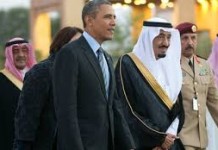Context
US Joint  Chief of Staff Admiral Mike Mullen recently told reporters that Lashkar-e-Tayyaba (LeT) poses a “significant regional and global threat.” This statement significantly raises the stakes for Pakistan. PoliTact examines this statement by studying the historical evo
Chief of Staff Admiral Mike Mullen recently told reporters that Lashkar-e-Tayyaba (LeT) poses a “significant regional and global threat.” This statement significantly raises the stakes for Pakistan. PoliTact examines this statement by studying the historical evo
lution of LeT.
Analysis
The recent statements by the US Joint Chiefs of Staff Chairman, Admiral Mike Mullen regarding LeT have surprised many. He asserted that the LeT network was expanding into Afghanistan and other countries beyond the AfPak locality. Until now, LeT has been known to be operating specifically in Afghanistan and Indian held Kashmir. However, there have been indications that the militant organization has started establishing links with terrorist-in-the-making in Europe and America. The arrest of alleged LeT operative David Headley and his involvement in the Mumbai attack may also be the basis for Admiral Mullen to declare LeT not only a regional threat but also a global one.
Background
Form all accounts, LeT has been a growing regional threat. Reliable information attained first-hand in background interviews and discussions with Afghan and Pakistani journalists, including Pakistani officials, reveal that LeT has restarted its activities with renewed zeal in the region. The organization is particularly active in southeastern and eastern Afghan provinces namely Kunar, Nooristan, Nangarhar, Laghman, Paktika and Khost provinces. LeT has also been exceptionally active in the Afghan capital Kabul and has already conducted several attacks in the city.
PoliTact sources assert that LeT is presently coordinating its activities with the Al Qaeda leadership as well as with the Haqqani Network. Additionally, LeT is also conducting operations with Afghan Taliban in Kunar, Nooristan, Nangarhar and Laghman provinces. The Afghan Taliban have had little following in these Wahabi-influenced provinces previously as they are predominantly Deobandis. On the other hand, LeT has established links with the local Wahabist due to a shared religious ideology. LeT’s local links date back to the late 1980s when the group’s head, Hafiz Saeed was himself based in Kunar. LeT’s mother organization, Jamaat Al Dawaat wal Irshad played a significant role in Kunar and paved the way for Hafiz Saeed to establish extensive links in this part of Afghanistan.

LeT has always had influence in these areas. Abdullah Azzam had established a virtual Wahabi mini ‘state’ in Kunar in the 1980s and LeT’s head Hafiz Saeed was part of that state, providing a large number of militant to Azzam to act as ‘soldiers.’ During the Taliban rule in Afghanistan, LeT was running a militant training camp for Kashmiri Mujahideen in Kunar. It was Azzam and the influence of his followers, which converted a large number of militants in these provinces to Wahabism. LeT is now leveraging these established links and influence in Afghanistan and is increasingly engaging in fighting with US and NATO forces while providing much needed support to sustain the insurgency in the above mentioned regions of Afghanistan. This role of LeT is thought to be the primary factor in the decision of local Wahabi organizations in Nooristan and Kunar provinces to swear allegiance to Mullah Omar.
While LeT have been involved in the region for decades, the groups recent activities in Afghanistan have mainly focused on countering and attacking Indian interests. The two attacks on the Indian embassy in Kabul were widely reported as the work of the same organization. LeT is reportedly also responsible for several attacks inside India, including on the Indian parliament in January 2002. Indians also blame the Mumbai terrorist attacks of November 2008 on LeT.
Conclusion
LeT’s past and current involvement in Afghanistan is well known. However, the timing of the warning by Admiral Mullen is intriguing. Pakistan is yet to begin the North Waziristan offensive aimed primarily against the Haqqani Network led by Sirajuddin Haqqani. In the pre-flood scenario, the statement regarding LeT was designed as a pressure tactic for Pakistan to mount the offensive in North Waziristan. LeT is widely believed to have strong links to the Pakistani intelligence agency. Thus Admiral Mullen’s statement was probably aimed at sending a strong message to Pakistan military that if they keep desisting from launching North Waziristan operation against the Haqqani Network, they could face allegations and criticism for protecting LeT. Given that Mullen has already declared LeT as having global terrorist links, puts Pakistan at risk of being labeled as a state sponsor of Terrorism. However, in the aftermath of the floods the situation has completely changed, and players have been forced to reevaluate their strategy.
Tell Us What You Think
Feedback@politact.com



